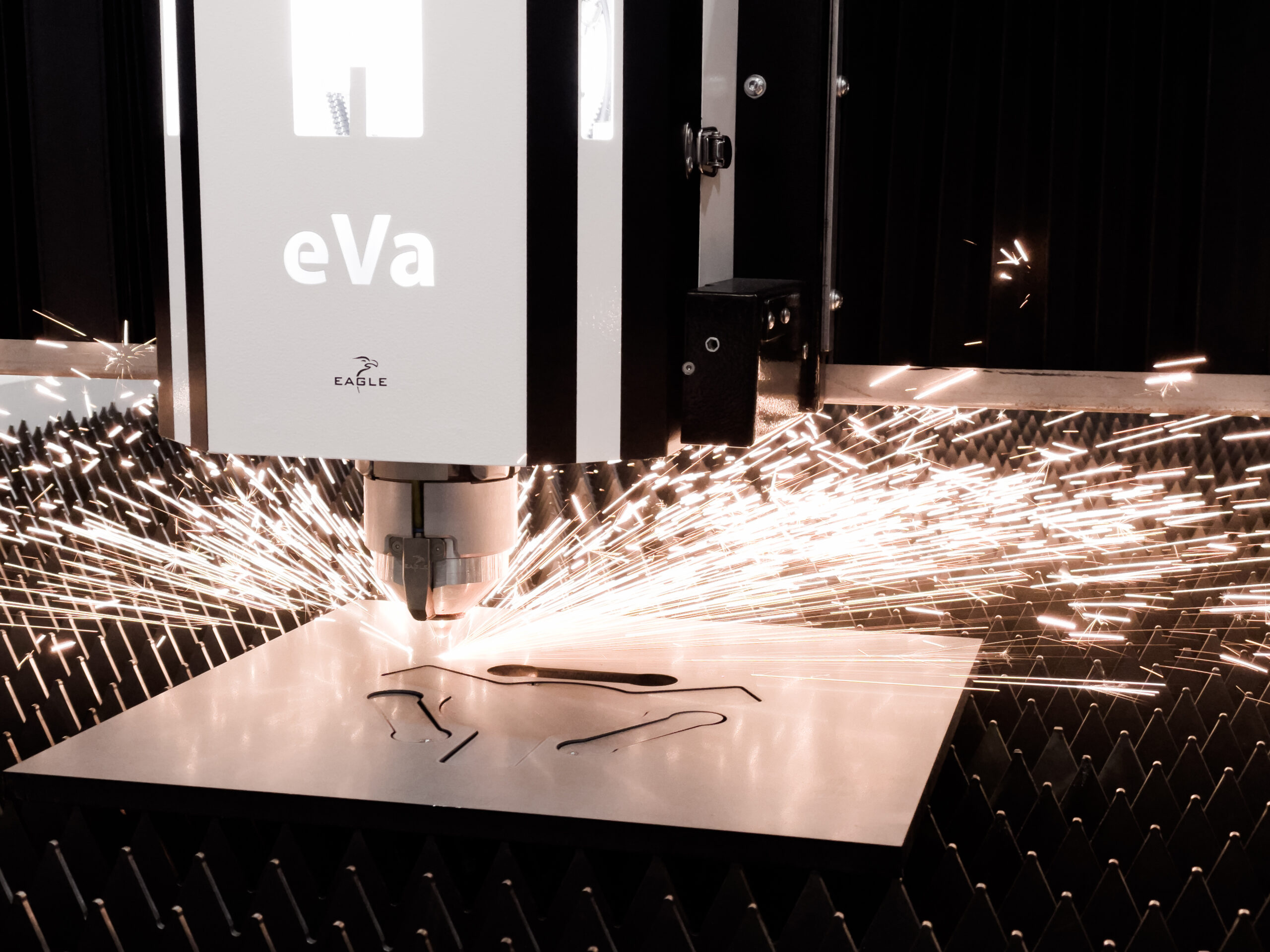
At Eagle, every idea, every component and innovation aims at the same goal: developing the fastest laser with the speediest motion dynamics for the most productive and efficient machines in the world. But we don’t only want to say this. We want you to understand it. Here’s all you need to know about the benefits of laser technology.
First, laser diodes from a power source transform electricity into photons. So, they basically create light which is then pumped into a fiber-optic cable.
But if not controlled by a specific mechanism, light will go in every direction and we have seen how narrow and focused a laser beam is. We’ll get there, but first we need to understand how light travels through the fiber optic cable.
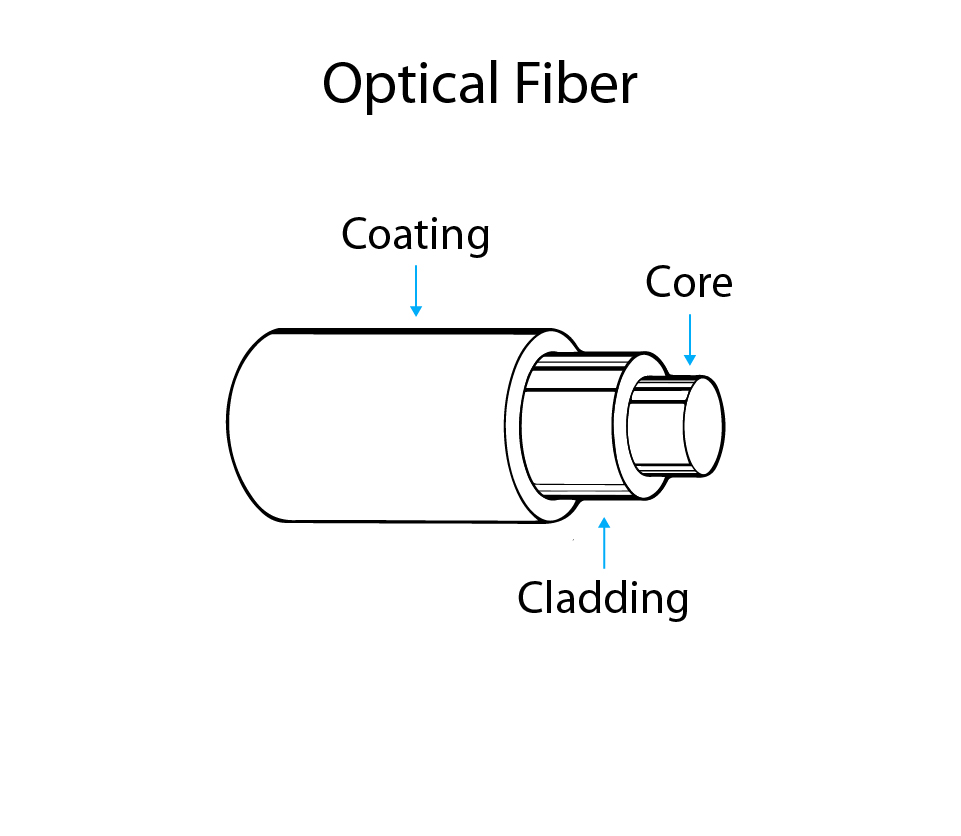
Due to the excellent energy conversion from electrical power into a laser cutting beam, fiber lasers can process sheet metal faster and cheaper than any other cutting technology. They also have fewer and more durable components, fewer consumables, and minimal service requirements, which make them an ideal choice for the metal processing industry.
7 Reasons why fiber laser technology is the best option for sheet metal processing
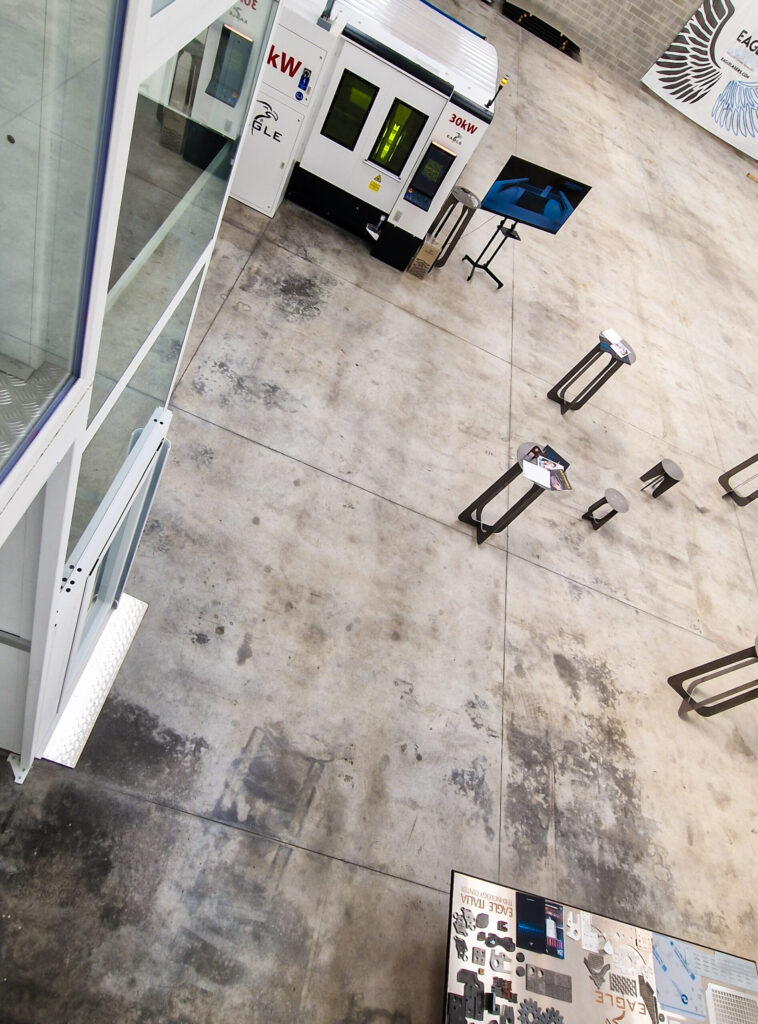
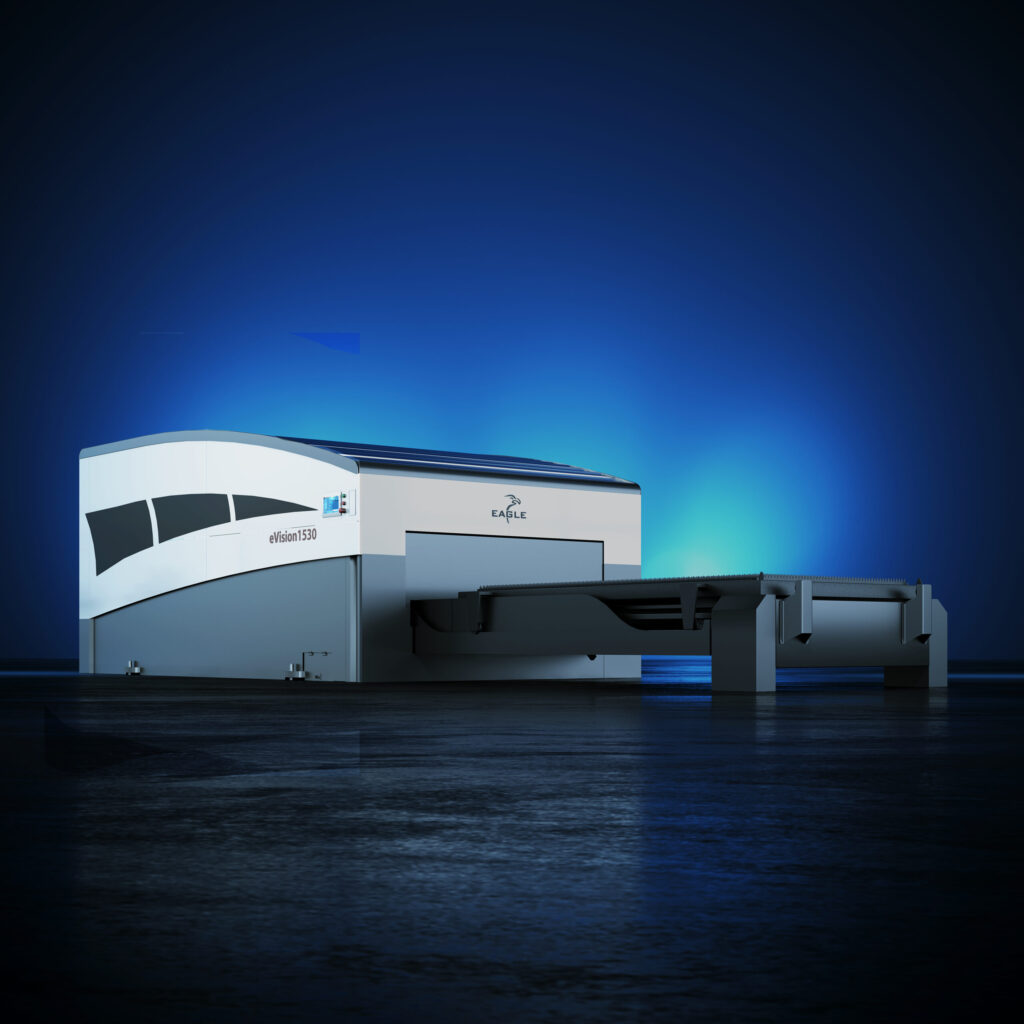
Over a decade ago, the laser cutting industry was dominated by CO2 and YAG technology. Today most of these processes have been replaced with fiber lasers, and there are solid reasons behind this transition. Innovations simply work better in every field, and the sheet metal industry is no exception. We leave you with seven strong arguments why fiber lasers have taken over metal processing shops around the world.
A powerful machine can produce more in less time, with less energy consumption. Read more to find out how high laser powers paired with peak-level dynamics drastically increase cutting speed, leading to larger production volumes cut in less time.
When we started in 2006, we already knew where we were aiming: unmatched efficiency that would translate into higher profits for our customers. Power-wise, Eagle has always been a pioneer. But our quest for power is not gratuitous; it’s directly linked to our goal of increasing profits.
The ideal laser machine is powerful, fast, and reliable. This means it can produce more in less time, with less maintenance and less energy consumption. However, it becomes impossible to speak about high powers without mentioning motion dynamics. An ultra-powerful machine can reach its full cutting capacity only when paired with peak-level acceleration. Eagle’s up to 6G acceleration rises to the challenge by delivering a maximum positioning speed of 340 m/min and a cutting rate of up to 150 m/min, maintaining complete accuracy.
Increasing the laser power increases cutting speed in an almost linear way. This leads to larger production volumes cut in less time and tremendously impacts productivity and efficiency.
On the one hand, by cutting faster and more precisely, downtime is drastically reduced. On this subject, automation systems allow the line-up cutting programs to keep the machine up and running during night shifts or weekends to boost productivity further.
On the other hand, by cutting more parts in shorter work cycles, the machine makes more efficient use of energy and all consumables resulting in reduced operational expenses and a lower cost per part.
High power, motion dynamics, and swift material handling invariably results in higher productivity and cost-effectiveness, which, in simple terms, means higher profits.
We have designed a practical scenario to explain more clearly the impact of power on the volume of cut parts, the cutting speed, and the cost and profit per part.
In this example, the same 15mm mild steel part has been cut with different powers, from 4kW up to 40kW to show how an increase in power drastically increases productivity and profit.
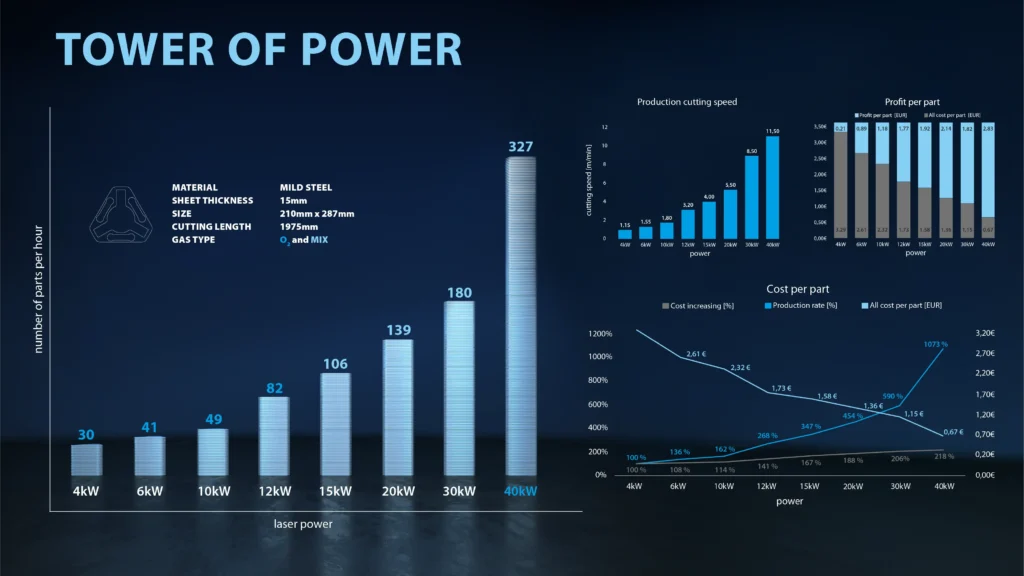
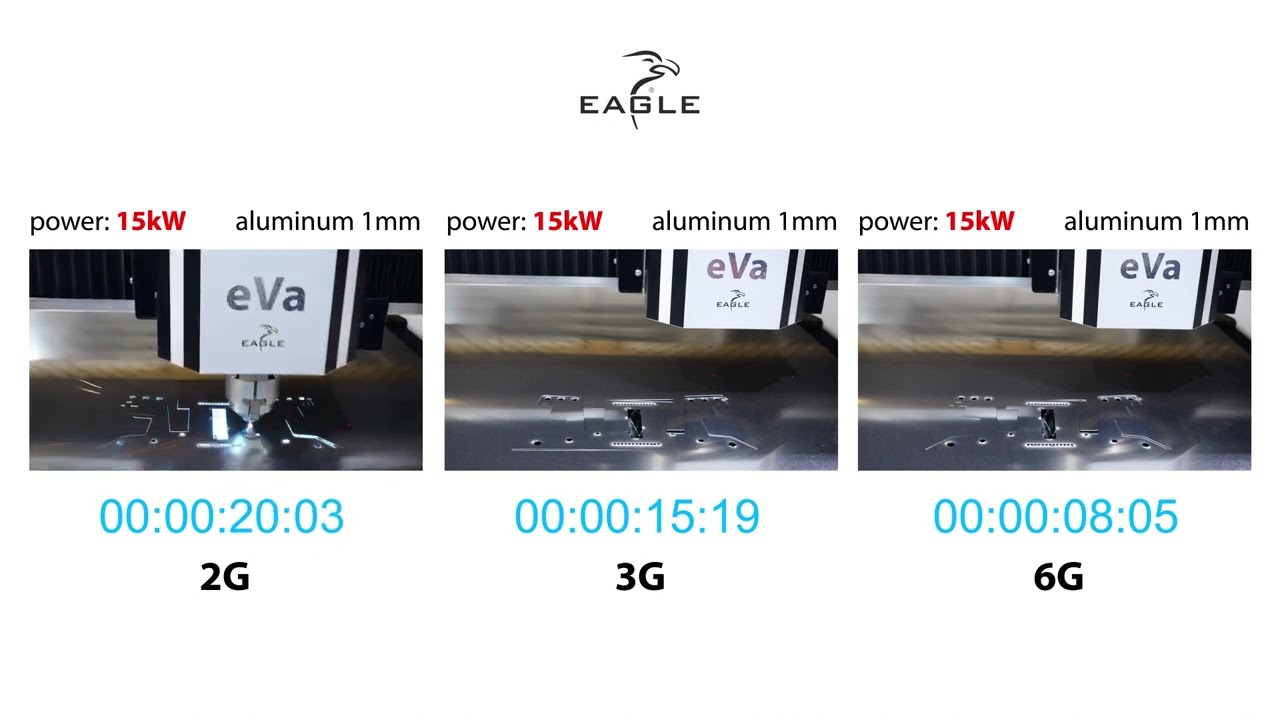
If you focus solely on high wattage and purchase an ultra-powerful machine with poor motion dynamics, your power will likely not see its full potential. For this reason, dynamics are a critical factor to take into account.
We can all agree that the faster you cut, the better. So power does have an important role, but when it comes to fiber laser machines, you have to consider the speed and, more importantly, the acceleration. As a short recap on mechanics, speed is the distance covered in a unit of time, while acceleration is the rate of change of that speed.
There’s a reason why the automation of production processes is an increasing trend in almost every industry. It brings immense benefits in terms of efficiency, control, and productivity for a smarter and more efficient production.
Automation allows for 24/7 production. Processes can be programmed and executed by machines even unattended, resulting in uninterrupted production.
Machines, robots, and specialized software can perform much faster and more accurately than most humans. This results in lower labor costs, more efficient use of energy, fewer human errors, and reduced material waste.
Smart machines learn how to improve performance by collecting, analyzing, and optimizing processes for more accuracy, consistency, and superior product quality.
Automated machines can perform dangerous tasks and work in hazardous environments that would risk the well-being of workers.
Machines and robots can take over tedious and repetitive activities, so workers carry out jobs that require higher and more creative skills.
Machine-learning through repetitive processes gives way to higher predictability of time and costs for any project, hence better planning and the ability to replicate successful practices.
Robots, machines, and automated storage systems can take advantage of vertical space, saving valuable area and making room for more productivity.
Automation systems are flexible, versatile, and built to work in sync. Machines "learn" new processes instantaneously while hardware and software quickly adapt to updates, new utilities, and applications.
A faster, more accurate production that optimizes processes and floor space uses energy more efficiently and reduces scrap translates into a lower carbon footprint.